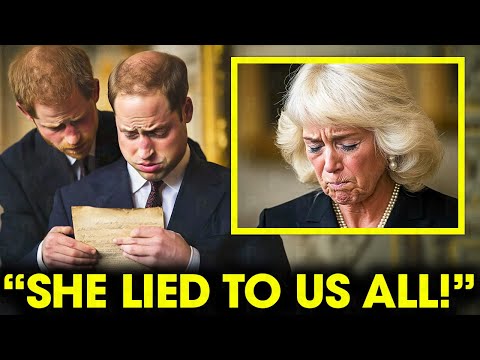Prince William caused chaos at Kensington Palace when he made a shock decision in response to King Charles’s bold legal move during a recent royal meeting. In a dramatic and highly publicized move that has captured the attention of royal watchers and media alike, the royal family shared a significant update following a pivotal meeting held by King Charles at Windsor Castle. The meeting, which comes only days after Prince William’s bold initiative to overhaul traditional royal protocol, marks a turning point in the modernization of the monarchy.
Buckingham Palace confirmed that King Charles held a significant meeting during which an influential figure was present to discuss the matter. The 42-year-old heir’s decision to separate his legal affairs from those historically employed by the crown signals not just a personal break, but a broader rethinking of institutional protocols. The Prince of Wales has stunned observers by deciding to appoint his own legal representation, independent of the monarch’s long-standing team of advisers.
This strategic decision underscores William’s determination to carve out a more modern and autonomous identity within the monarchy. Historically, senior royals have relied on a centralized team of legal advisers with deep-rooted connections to the crown. However, William’s choice to part ways with the established firm Harbottle and Lewis in favor of the firm Miss Han Dia represents a clear departure from convention. At the heart of the decision was the appointment of a legal team that once represented Princess Diana during her 1996 divorce — a move that in itself sent shockwaves through royal circles.
According to sources close to the palace, this move is a clear indicator of William’s intent to lead with a fresh, progressive outlook. As the digital age intensifies legal scrutiny, media relations, and public expectations, Prince William’s decision is seen as a proactive step toward managing these challenges in a manner that is distinct from his father’s approach. His decision has sparked intense internal debates among royal advisers regarding the future shape of the monarchy.
While King Charles remains committed to maintaining certain traditions, William’s breakthrough signals an openness to reform and a willingness to adapt to evolving social norms. His appointment of Miss Han Dia is widely interpreted as a move towards redefining the public image of the royal family, ensuring that modern challenges are met with innovative strategies and independent thinking. For decades, Harbottle and Lewis had been more than just legal advisers. They were an intrinsic part of the royal fabric, having steered the family through turbulent periods such as the infamous 2006 News of the World royal phone hacking scandal.
The departure from this trusted firm and from the legal strategies embraced by previous generations indicates that Prince William is willing to question established systems. His decision, reportedly influenced by his desire to be recognized as an independent leader, reinforces a broader vision to shape a monarchy that aligns with contemporary values and expectations. Insiders reveal that this was not a decision made lightly. The choice to appoint separate legal representation is part of a broader strategy to shield the royal family from the growing complexities in legal, media, and public relation arenas.
Prince William’s approach reflects both calculated determination and a deeply personal need to differentiate his role from that of his father, King Charles. With his spouse Catherine also increasingly in the spotlight for her candid handling of personal battles such as her public fight against cancer, William appears determined to balance both duty and personal autonomy as he steps further into his role as a future monarch.
As Prince William steadily embraces more responsibilities, his strategic pivot is being lauded by observers as a forward-looking maneuver that could well redefine what modern royalty means for generations to come. The change in legal counsel is emblematic of a broader shift in leadership style — one that is prepared to operate outside the shadows of past precedent and forge a distinctive path. With debates swirling within Windsor and beyond, the royal family faces an uncertain yet promising future — one in which modern strategies and traditional values must coalesce.
